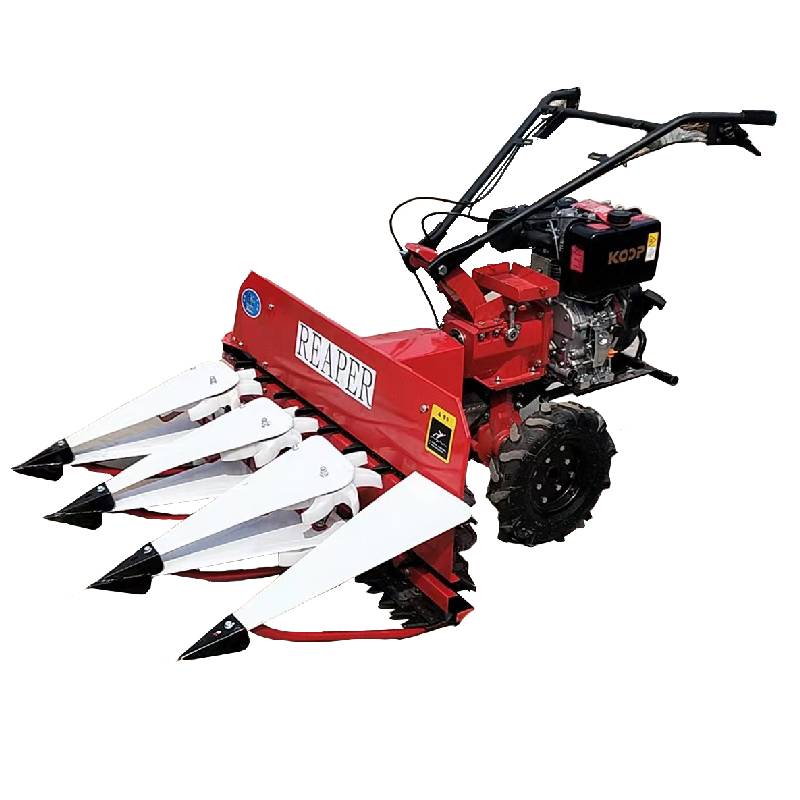corn forage harvester
The Evolution and Impact of Corn Forage Harvester Technology
Corn is one of the most significant crops globally, not only for human consumption but also for livestock feed. As the demand for efficient and high-quality feed increases, the tools and technologies used in corn harvesting have evolved tremendously. Among these tools, the corn forage harvester has played a pivotal role in the agricultural industry, transforming the way farmers harvest and process corn.
Understanding Corn Forage Harvesters
A corn forage harvester is a specialized piece of agricultural machinery designed to harvest forage crops, primarily corn, at the optimal time for nutrition and quality. Unlike traditional combines, which are intended for grain harvesting, forage harvesters are built to chop the harvested material into small pieces that can be easily stored and used for silage. This silage serves as an essential feed source for livestock, particularly during the winter months when pasture is not available.
Historical Perspective
The first corn forage harvesters appeared in the mid-20th century, marking a significant advancement in agricultural technology. Early machines were simple and required manual labor for operation. Over the years, innovations in design and engineering led to the development of more efficient, powerful, and reliable models. The introduction of self-propelled forage harvesters in the 1960s revolutionized corn harvesting, allowing farmers to cover larger areas in less time and with greater efficiency.
Enhanced Efficiency and Productivity
Today’s corn forage harvesters are equipped with sophisticated technology that maximizes efficiency. Modern models feature high-capacity choppers, variable speed settings, and advanced GPS technology, which aids in precision farming. These advancements enable farmers to optimize their harvesting operations, reduce waste, and improve the quality of the forage produced. Additionally, many machines are designed to minimize soil compaction, thereby preserving soil health and productivity for future crops.
Efficiency is further enhanced by features such as automatic moisture sensing, which allows farmers to determine the ideal time to harvest based on the moisture content of the corn. Harvesting at the right time is crucial, as it significantly affects the nutritional value of the silage produced and, consequently, the health and productivity of the livestock that consume it.
corn forage harvester

Environmental Considerations
The agricultural sector faces increasing pressure to adopt sustainable practices, and corn forage harvesters are no exception. Modern machines are designed with environmentally friendly features, such as fuel-efficient engines and reduced emissions. By improving the efficiency of the harvesting process, these machines help reduce the carbon footprint associated with farming activities.
Moreover, proper management of corn forage harvesting plays a vital role in soil conservation. Forage harvesters that slice and chop the corn properly can help reduce residue left on the field, promoting better soil structure and reducing erosion. This practice not only benefits the environment but also contributes to long-term agricultural sustainability.
Economic Impact
The economic implications of corn forage harvesters are significant. By reducing labor costs and increasing yield, these machines can enhance the profitability of a farm operation. Farmers can make better use of their resources and time, leading to improved operational efficiency. Furthermore, the high-quality silage produced can lead to healthier livestock, ultimately resulting in higher milk and meat production.
Looking to the Future
As technology continues to advance, the future of corn forage harvesters looks promising. Innovations in artificial intelligence and machine learning are expected to drive further improvements in efficiency and yield optimization. Furthermore, developments in automation could potentially reduce the need for manual labor even more, allowing farmers to focus on other critical aspects of their operations.
In conclusion, corn forage harvesters have fundamentally changed the landscape of corn production and livestock feeding. Their evolution reflects the broader trends in agricultural technology aimed at improving efficiency, sustainability, and profitability. As the global population continues to grow and the demand for food increases, the importance of these machines will only become more pronounced. Farmers who leverage the advancements in corn forage harvester technology stand to gain significant competitive advantages and contribute to sustainable agricultural practices.
Latest news
-
Mini Combine Harvester for Soybean | Compact & Efficient Soybean Harvesting SolutionsNewsNov.24,2025
-
Mini Combine Harvester for Paddy – Compact, Efficient Rice Harvesting SolutionsNewsNov.24,2025
-
Mini Chain Harvester: Compact Forestry Solutions for Sustainable LoggingNewsNov.23,2025
-
Kartar Mini Harvester – Compact, Efficient Harvesting Machinery for Small FarmsNewsNov.23,2025
-
Compact Power: Elevate Your Farming with Harvesting Machine SmallNewsNov.22,2025
-
Discover the Power and Potential of Harvester Mini Combine Machines | Efficient Small-Scale HarvestingNewsNov.22,2025








